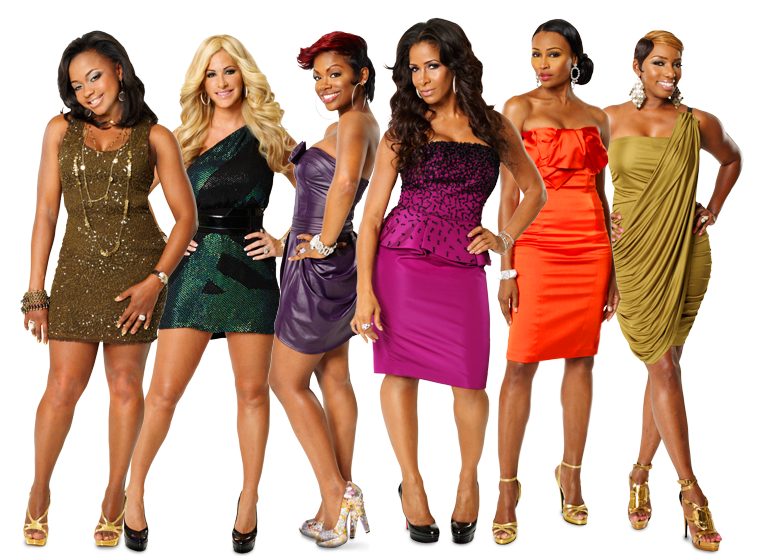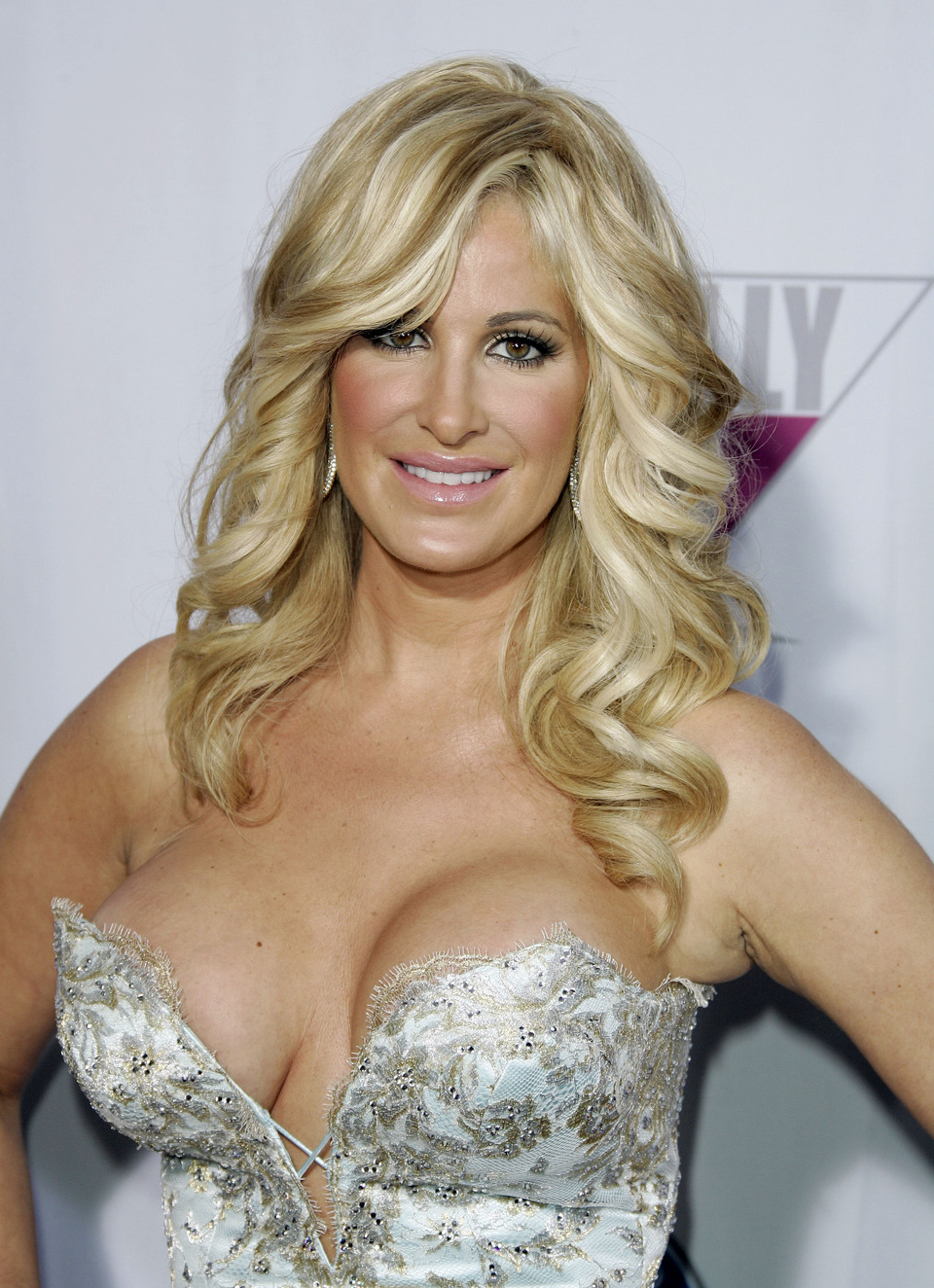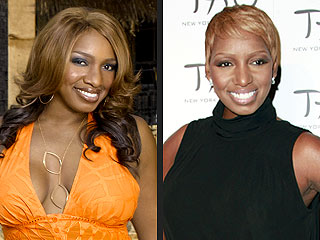Bodies and Bravo’s Brand on The Real Housewives of Atlanta and New York
Jorie Lagerwey / University College Dublin

I’ve written here before1 about the Bravo channel’s incredibly successful brand of “quality reality” programming that features a style of luxury motherhood that can be attained by consuming the products created and promoted by the shows’ cast members, but which tempers its aspirational consumerism with a winking sensibility that mocks its performers’ excesses. This dual address serves several functions: it releases some of the tension inherent in celebrating upper-class wealth for middle-class viewers (especially in a recession era) and it contains the ideological power of the female stars whose brands it promotes and helps create. Less obvious in the network’s publicity materials is its troubling tendency to keep its programming geographically specific and strictly segregated along racial and ethnic lines. The Real Housewives of Miami (2011-present), for example, features an all Latina cast while the Shahs of Sunset (2012-present) is set in Los Angeles’s Persian community. This segregation across the majority of its hit shows seems to make Bravo’s particular vision of postfeminist economic success via creating the self-as-brand something available only to white women willing to commit themselves to the extreme body discipline and the limited range of industries that fit in the network’s so-called “passion points” of food, fashion, beauty, design, digital and pop culture.2 This essay begins to examine The Real Housewives of Atlanta (RHOA), consistently one of the network’s highest rated shows,3 and indeed one of the most watched shows in its timeslot,4 in this context. In its first four seasons, the otherwise African American cast of RHOA also starred Kim Zolciak-Biermann, a token “unfit” white body—a body that would likely not be cast in New York, Beverly Hills, Orange County, or even New Jersey. Kim’s excessive, unruly, artificial white body breaks all the disciplinary rules it would be subject to were she to appear on The Real Housewives of New York (RHONY) offering a complex rupture in the Bravo brand’s rules of wealthy white postfeminist subjectivity.

On one hand, the first four seasons of The Real Housewives of Atlanta5 do a better job of representing multiple body types than the other Housewives locations. Divided between “the talls” and “the smalls,” in addition to Kim’s wigs and breast implants, the series features NeNe Leakes’s tall, imposing figure alongside the extremely slender body of model Cynthia Bailey, the compact, athletic Kandi Burruss, the curvier DeShawn Snow, and muscular Shereé Whitfield, who favors intense boxing workouts. On the other hand, the Atlanta women’s bodies are represented as sites of labor, available for intervention in ways that the white New York women’s disciplined and contained postfeminist bodies are not. The women in every Housewives city have surely sunk small fortunes into beauty maintenance and anti-aging regimens, but we rarely see those interventions onscreen. Real Housewives of New York (RHONY) alumnae Heather Thompson’s Yummie brand shapewear, and Bethenny Frankel’s Skinnygirl low calorie cocktails and health and fitness brand are textual evidence that body work is part of these women’s lives but for them it’s more often a matter solved with consumer products simultaneously promoting the women’s own brands. For the Atlanta women, body shaping is a matter for intense physical labor like Shereé’s boxing, or expensive, painful, invasive surgical intervention for NeNe and Kim, but without the celebration of consumption that we see, for example when Real Housewives of Beverly Hills’s Adrienne Malouf throws a spa party promoting the products she uses, and without exploiting the opportunity for furthering their own selves-as-brands outside the confines of the show as Heather or Bethenny would.

In RHOA’s third season, NeNe and Kim both have plastic surgery. We follow NeNe to the hospital for her nose job, breast implant reduction and liposuction, and we see her heavily medicated both before and after the procedures. The physical manipulation acted out on her body is represented by drug-induced extreme emotional vulnerability, and we see her, unable to open her eyes, begging to talk to her husband, with whom her relationship (at the time) is strained to the point that she is considering divorce. Once home, the exhaustion and physical pain she feels is evident despite her wisecracking. Later, Kim has an off camera breast augmentation, and possible liposuction. For her, the emphasis is on her unhealthy habits of junk food and cigarettes, and her inability to achieve the body she wants without surgery is represented as just another dimension of her laziness. Nonetheless, seeing the aftermath of surgery and the pain involved in such drastic physical intervention highlights the vulnerability and labor that goes into creating the women’s bodies.
By making the need for more physical intervention and labor visible within the show, RHOA in some ways demonstrates black bodies as in need of more work than the white bodies represented on RHONY in order to achieve the disciplined, “successful” postfeminist maternal body. This reproduces old stereotypes of black embodiment versus white intellectualism, and set in contrast to the successful consumer products companies so evident on the New York franchise, highlights a failure to exploit the opportunity at postfeminist economic opportunities offered by the show. But this simple dichotomy, along with the racial segregation Bravo practices with most of its shows, is complicated by Kim’s presence and her status with NeNe as one of RHOA’s breakout stars. Rather than reinforcing the segregated vision of successful postfeminist subjectivity suggested by the rest of Bravo’s racially and ethnically specific programming, the labor intensive and surgically enhanced bodies of RHOA might actually illustrate the impossibility of the aspirational ideal represented by RHONY. Comparing The Bachelor’s (ABC 2002-present) mostly white representations of game show dating to Flavor of Love’s (Vh1 2006-2008) mostly black cast of essentially the same format, Kristen Warner has pointed out that grading representations on a continuum of “good” to “bad” isn’t particularly productive.6 Comparing the two shows, Warner concludes that Flavor “embodied the instability of whiteness through its many ruptures in ideologies of marriage, of capitalist consumption, and of femininity.”7 In the same vein, RHOA highlights the ruptures in Bravo’s brand and moves the show from a vehicle for winking consumerist aspiration to an example of successful brand-selves emerging outside the strict limits of postfeminist entrepreneurial success set by Bravos other stars.
Image Credits:
1. The Real Housewives of Atlanta
2. Kim’s Excessive Body
3. NeNe Before and After
Please feel free to comment.
- Jorie Lagerwey, “Kell on Earth: Kelly Cutrone And The Rare Failure Of Brand Bravo,” Flowtv.org 18.01, June 20, 2013. http://flowjournal.org/2013/06/kell-on-earth/ [↩]
- Bravo’s ad sales website lays out its brand profile and its audience’s “passion points.” http://www.affluencers.com/ Accessed May 29, 2013. [↩]
- Philiana Ng, “Real Housewives of Atlanta Draws Biggest Premiere for Franchise,” Hollywood Reporter Nov 8, 2011. http://www.hollywoodreporter.com/live-feed/real-housewives-of-atlanta-premiere-ratings-258771 [↩]
- Maria Valiente, “Real Housewives of Atlanta Beats All of NBC’s Scripted Programs in Ratings,” wetpaint.com April 25, 2013 http://www.wetpaint.com/real-housewives-of-atlanta/articles/real-housewives-of-atlanta-beats-all-of-nbcs-scripted-programs-in-ratings [↩]
- This essay is based on the first four seasons of Real Housewives of Atlanta (2008-2012). Season five hasn’t yet aired in Ireland. [↩]
- Kristen Warner, “Who Gon Check Me Boo: Reality TV as Haven for Black Women’s Affect,” flowjournal.org 14.06, Aug 18, 2011. http://flowjournal.org/2011/08/who-gon-check-me-boo/
[↩] - Ibid. [↩]
I really wish they wouldn’t brought nene back to the show she is not real she is very fake,Just being honest, all of those women are too old to be acting like they do.
The women were getting along until nene,arrived now here comes messy nene,it seems to me that when nene was a teenager she didn’t have friends nobody gave her attention she was probably talked about,and if this is true that should have taught her not to treat people bad,but instead she’s needy to be the center of attention,and to be that girl who bullied her.
and to be the girl who bullied her.